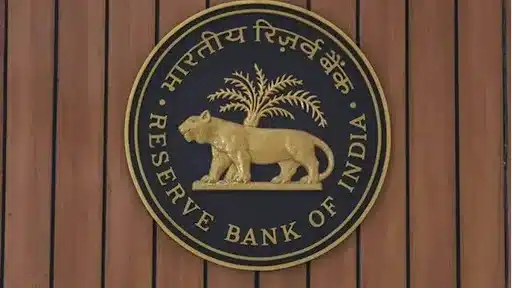What’s in today’s article?
- Why in the News?
- About the RBI’s Latest Report
- Key Terms of the Report
Why in the News?
- According to the Reserve Bank of India’s data, India’s employment rate grew by 6 per cent in the fiscal year ended March 31, 2024 from a growth of 3.2 per cent in 2022-23.
About the RBI’s Latest Report
- The RBI recently released data from its Measuring Productivity at the Industry Level-the India KLEMS Database.
- KLEMS stands for [Capital (K), Labour (L), Energy (E), Material (M) and Services (S)].
- The database is part of a research project supported by the Reserve Bank to analyse productivity performance in the Indian economy at disaggregated industry level.
- The database covers 27 industries comprising the entire Indian economy.
- The database also provides these estimates at the broad sectoral levels (agriculture, manufacturing and services) and at the all-India levels.
- Key Takeaways from the Latest Data:
- India’s total employment stood at 643.3 million in 2023/24 versus 596.7 million in FY23.
- Unemployment Rate (UR) in urban areas decreased from 6.8 per cent during January–March 2023 to 6.7 per cent in January–March 2024 for persons of age 15 years and above.
- Female Unemployment Rate declined from 9.2 per cent to 8.5 per cent for the same period.
- Labour Force Participation Rate (LFPR) in urban areas has shown an increasing trend from 48.5 per cent to 50.2 per cent for the same period.
- There was an increasing trend in Worker Population Ratio (WPR) for persons of age 15 years and above from 45.2 per cent to 46.9 per cent for the same period.
Key Terms of the Report
- Labour Force Participation Rate:
- The labour force consists of persons who are of age 15 years or older, and belong to either of the following two categories:
- Employed
- Unemployed and are willing to work and are actively looking for a job
- There is a crucial commonality between the two categories — they both have people “demanding” jobs. This demand is what Labour Force Participation Rate (LFPR) refers to.
- Employment Rate:
- The employment rate is the percentage of employed persons in relation to the comparable total population.
- Unemployment Rate:
- The unemployment rate is the percentage of adults who are in the labour force but who do not have jobs.
- Periodic Labour Force Survey:
- The National Statistics Organisation (NSO) had launched the Periodic Labour Force Survey (PLFS) in April 2017.
- It was launched as part of efforts to get a better sense of the job situation and provide reliable and timely data.
- The PLFS is designed with two major objectives for measurement of employment and unemployment.
- First, to measure the dynamics in labour force participation and employment status in the short time interval of three months for only the urban areas in the Current Weekly Status (CWS).
Second, for both rural and urban areas, to measure the labour force estimates on key parameters in both usual status and Current Weekly Status.
Q1. What is Disguised Unemployment?
Disguised unemployment occurs when part of the labour force is either left without jobs or operates redundantly, such that the productivity of the workforce is effectively zero. It is unemployment which has no impact on aggregate production.
Q2. What is Structural Unemployment?
Structural unemployment is a form of involuntary unemployment caused by a mismatch between the skills that workers in the economy can offer, and the skills demanded of workers by employers. Structural unemployment is often brought about by technological changes that make the job skills of many workers obsolete.
Source: Employment rate rises 6% provisionally in FY24 from 3.2% in FY23: RBI data | Business Standard
Last updated on December, 2025
→ Check out the latest UPSC Syllabus 2026 here.
→ Join Vajiram & Ravi’s Interview Guidance Programme for expert help to crack your final UPSC stage.
→ UPSC Mains Result 2025 is now out.
→ UPSC Notification 2026 is scheduled to be released on January 14, 2026.
→ UPSC Calendar 2026 is released on 15th May, 2025.
→ The UPSC Vacancy 2025 were released 1129, out of which 979 were for UPSC CSE and remaining 150 are for UPSC IFoS.
→ UPSC Prelims 2026 will be conducted on 24th May, 2026 & UPSC Mains 2026 will be conducted on 21st August 2026.
→ The UPSC Selection Process is of 3 stages-Prelims, Mains and Interview.
→ UPSC Result 2024 is released with latest UPSC Marksheet 2024. Check Now!
→ UPSC Prelims Result 2025 is out now for the CSE held on 25 May 2025.
→ UPSC Toppers List 2024 is released now. Shakti Dubey is UPSC AIR 1 2024 Topper.
→ UPSC Prelims Question Paper 2025 and Unofficial Prelims Answer Key 2025 are available now.
→ UPSC Mains Question Paper 2025 is out for Essay, GS 1, 2, 3 & GS 4.
→ UPSC Mains Indian Language Question Paper 2025 is now out.
→ UPSC Mains Optional Question Paper 2025 is now out.
→ Also check Best IAS Coaching in Delhi

















